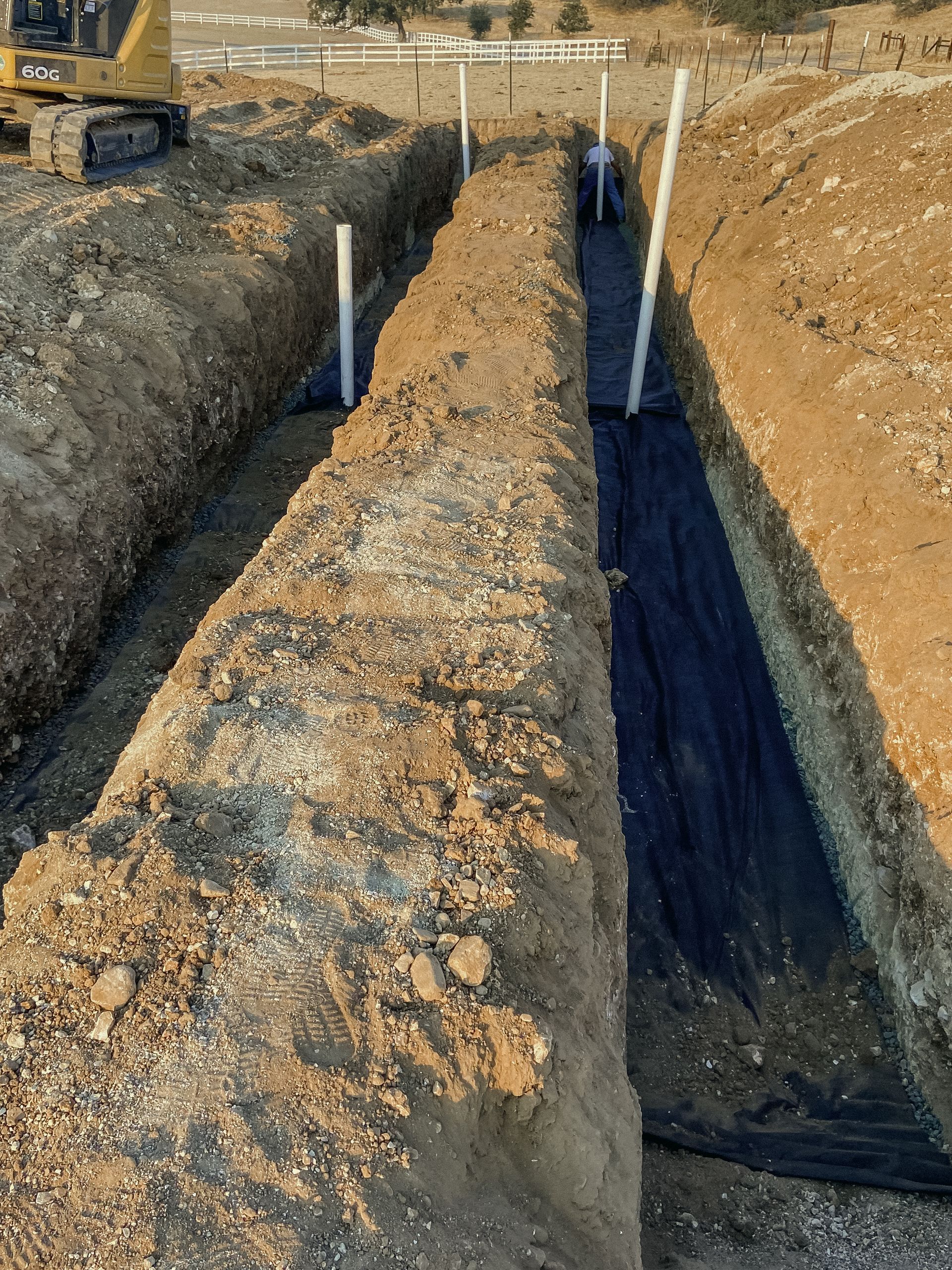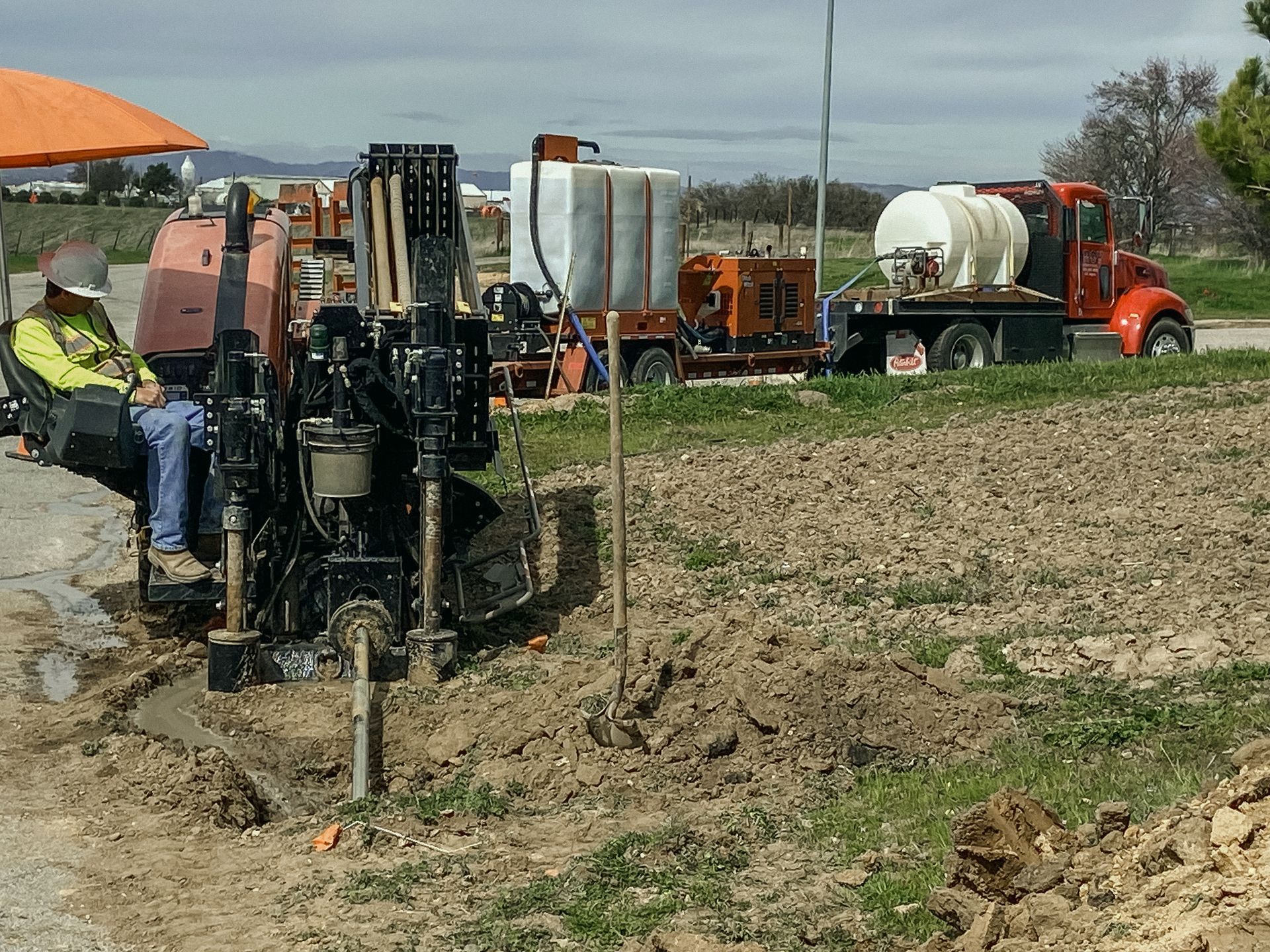Blogs

Unveiling the Depths: A Comprehensive Guide to Open Cut Trenching In the realm of construction and infrastructure development, various methods are employed to excavate earth and create pathways for pipelines, cables, and other utilities. One such method, open cut trenching, stands as a stalwart technique known for its efficacy and versatility. This blog aims to delve deep into the nuances of open cut trenching, exploring its applications, techniques, advantages, and considerations. Understanding Open Cut Trenching What is Open Cut Trenching? Open cut trenching, also known as open trench excavation, is a traditional method of excavation used to create trenches or ditches in the ground. These trenches serve as pathways for utilities such as pipelines, cables, conduits, or drainage systems. The process involves cutting into the earth, removing soil, rock, or other materials to form a trench of the desired dimensions. The Evolution of Open Cut Trenching Open cut trenching has been a fundamental technique in construction and infrastructure development for centuries. Historically, manual labor and basic tools like shovels and pickaxes were used to excavate trenches. However, with advancements in technology and machinery, the process has become more efficient and precise. Modern open cut trenching utilizes heavy machinery such as excavators, backhoes, trenchers, and bulldozers to expedite the excavation process. Additionally, specialized equipment such as trench boxes and shoring systems are employed to ensure safety and stability during trenching operations. Applications of Open Cut Trenching Utility Installation One of the primary applications of open cut trenching is for the installation of underground utilities. These utilities may include water pipelines, sewer lines, gas pipes, electrical conduits, telecommunications cables, and fiber optics. Open trenches provide a clear pathway for the installation of these vital infrastructure components. Drainage Systems Open cut trenching is also commonly used for the construction of drainage systems. Trenches are excavated to accommodate stormwater drains, culverts, and other drainage infrastructure, helping to mitigate the risk of flooding and water damage in urban and rural areas. Road and Infrastructure Construction In road construction and infrastructure development projects, open cut trenching is often employed to accommodate utilities running alongside roads, highways, and railways. Trenches may be excavated parallel to the roadway to facilitate the installation of utilities without disrupting traffic flow. Landscaping and Irrigation In landscaping and agricultural contexts, open cut trenching can be utilized for the installation of irrigation systems, drainage tiles, and other underground infrastructure necessary for maintaining gardens, lawns, and agricultural fields. Techniques of Open Cut Trenching Planning and Preparation Before commencing open cut trenching operations, thorough planning and preparation are essential. This involves conducting site surveys, utility locates, and obtaining necessary permits and approvals. Additionally, factors such as soil type, groundwater levels, and environmental considerations must be taken into account during the planning phase. Excavation Process The excavation process begins with the marking of the trench boundaries and the removal of any surface obstructions. Heavy machinery such as excavators or trenchers is then used to dig the trench to the required depth and width. The excavated material is either stockpiled nearby for backfilling later or transported offsite for disposal, depending on project requirements. Shoring and Trench Support In situations where the trench walls are prone to collapse due to unstable soil conditions or the depth of the trench, shoring systems or trench boxes are employed to provide support and ensure worker safety. These systems may consist of hydraulic shores, steel trench boxes, or timber shoring depending on the specific requirements of the trench. Backfilling and Restoration Once the utilities are installed within the trench, the excavated area is backfilled with suitable materials such as gravel or compacted soil. Care must be taken to ensure proper compaction and grading to prevent settlement or subsidence in the future. Finally, surface restoration efforts such as paving, landscaping, or revegetation are undertaken to restore the area to its pre-construction state. Advantages of Open Cut Trenching Cost-Effectiveness Open cut trenching is often more cost-effective compared to alternative methods such as directional drilling or microtunneling, especially for shorter distances or shallow depths. The availability of heavy machinery and the relatively straightforward nature of the process contribute to its cost efficiency. Versatility Open cut trenching is a versatile method that can accommodate a wide range of utility sizes, depths, and soil conditions. It can be utilized in various environments, including urban, suburban, and rural areas, making it suitable for a diverse range of construction projects. Efficiency With the advent of modern machinery and equipment, open cut trenching has become increasingly efficient in terms of speed and productivity. Large trenches can be excavated relatively quickly, allowing for the timely installation of utilities and completion of construction projects. Accessibility Unlike certain trenchless methods that require specialized equipment or access points, open cut trenching is accessible and can be implemented using readily available machinery. This accessibility makes it a preferred choice for many construction contractors and utility companies. Considerations and Challenges Environmental Impact Open cut trenching can have environmental implications, particularly in sensitive ecosystems or areas with endangered species. Excavation activities may disrupt natural habitats, increase erosion, and contribute to soil and water contamination if proper mitigation measures are not implemented. Utility Interference One of the primary challenges of open cut trenching is the risk of damaging existing utilities or infrastructure during excavation. Accurate utility locates and careful planning are essential to avoid costly and potentially dangerous conflicts with buried pipelines, cables, or conduits. Safety Concerns Excavation work, especially in deep trenches, poses inherent risks to worker safety. Cave-ins, equipment accidents, and exposure to hazardous materials are among the potential hazards associated with open cut trenching. Proper training, adherence to safety protocols, and the use of appropriate protective measures are critical to mitigating these risks. Disruption to Traffic and Communities In urban or densely populated areas, open cut trenching can cause disruptions to traffic flow, pedestrian access, and nearby residents or businesses. Effective communication, traffic management strategies, and minimizing construction duration are essential to minimizing inconvenience and maintaining community goodwill. Conclusion Open cut trenching remains a cornerstone of construction and infrastructure development, offering a reliable and efficient method for excavating trenches and installing utilities. From utility installation to drainage systems and beyond, the applications of open cut trenching are vast and varied. However, it is essential to recognize the considerations and challenges associated with this method and to implement appropriate measures to mitigate risks and ensure successful project outcomes. As technology continues to evolve and techniques improve, open cut trenching will undoubtedly remain a vital component of the construction industry for years to come.

The world beneath our feet is a complex and vital network of utilities, pipelines, and infrastructure. Installing and maintaining these critical systems often requires precision and finesse. Horizontal Directional Drilling (HDD) has emerged as a revolutionary trenchless technology that allows us to burrow beneath the earth's surface with remarkable accuracy. In this comprehensive guide, we will explore the world of HDD, its applications, techniques, and the essential considerations to master this art. Chapter 1: Understanding Horizontal Directional Drilling 1.1 What Is HDD? Horizontal Directional Drilling, often abbreviated as HDD, is a trenchless method used to install underground utilities, such as water, gas, electrical, or telecommunication lines, with minimal surface disruption. This technology has gained immense popularity due to its ability to navigate beneath obstacles like roads, rivers, and existing infrastructure. 1.2 The HDD Process HDD involves a series of well-planned steps: Pilot Hole: The process begins by drilling a small-diameter pilot hole along the desired path. Reaming: Enlarging the pilot hole to create a borehole of sufficient diameter. Pullback: Pulling the utility lines through the borehole, simultaneously removing the drilling tools. Chapter 2: Applications of Horizontal Directional Drilling 2.1 Telecommunications HDD is widely employed in laying fiber optic cables, ensuring minimal disruption to existing infrastructure and reducing service downtime. This application is crucial for maintaining high-speed internet connectivity. 2.2 Utilities Installation HDD is the preferred method for installing gas, water, and electrical lines. It allows for the installation of utility lines without digging trenches, preserving landscapes and minimizing environmental impact. 2.3 Environmental Benefits HDD plays a significant role in minimizing environmental disruption. It prevents soil erosion, preserves habitats, and reduces the risk of contamination by preventing exposure of utilities to the surface. Chapter 3: Key Components of HDD 3.1 Drilling Rig The drilling rig is the heart of HDD operations. It includes: Drill Pipe: Hollow pipes used for the passage of drilling fluid and the drill head. Drill Head: The cutting tool that drills the pilot hole. Fluid Mixing System: A crucial part of the drilling process to lubricate and cool the drilling head. 3.2 Drill Fluid Drilling fluid, often called drilling mud, serves various purposes in HDD, including stabilizing the borehole, carrying cuttings to the surface, and cooling the drill head. 3.3 Guidance System GPS technology and electromagnetic locating systems help operators precisely control the direction and depth of the borehole. Chapter 4: Techniques for Successful HDD 4.1 Steering the Drill Proper steering is critical for HDD success. Operators use guidance tools and measurements to control the drill's direction and depth accurately. 4.2 Site Investigation Thorough site investigation, including geotechnical assessments, is essential to plan the drilling path and assess any potential obstacles. 4.3 Pipe Selection Choosing the right type of pipe is vital to ensure longevity and efficiency in the utility system. Factors like material and diameter are crucial considerations. Chapter 5: Safety Measures in HDD 5.1 Preventing Utility Strikes Utilizing advanced locating technology and maps of existing utilities is crucial to avoid striking or damaging existing underground infrastructure. 5.2 Protecting the Environment Proper disposal of drilling fluids and adherence to environmental regulations are paramount to protect the environment. Chapter 6: Challenges and Solutions 6.1 Rock Drilling Drilling through rock presents unique challenges. Advanced drill heads and equipment are employed for such operations. 6.2 Fluid Management Managing drilling fluids efficiently and disposing of them properly is essential to minimize environmental impact. 6.3 Steering Accuracy Maintaining precise steering, especially during longer bores, can be challenging. Regular monitoring and course corrections are required to ensure accuracy. Chapter 7: Case Studies Several case studies will highlight successful HDD projects, showcasing the technology's real-world applications and outcomes. Chapter 8: Future Trends 8.1 Automation The integration of AI and automation will likely play a significant role in enhancing drilling precision and efficiency. 8.2 Environmental Sustainability The HDD industry is continuously working to develop more eco-friendly drilling fluids and practices. Chapter 9: Conclusion Horizontal Directional Drilling has transformed the way we install and maintain essential utility lines. Its ability to minimize disruption to the environment and existing infrastructure is a testament to human ingenuity. As technology and techniques continue to advance, HDD will remain at the forefront of trenchless drilling methods. Mastering this art requires a deep understanding of the process, careful planning, and a commitment to safety and environmental responsibility. With these principles in mind, we can continue to harness the potential of HDD to build a more connected and sustainable world. Horizontal Directional Drilling is more than just a technology; it's a method that reshapes the underground landscape while leaving the surface world largely undisturbed. This comprehensive guide has explored its various aspects, from its core principles and applications to the intricate techniques, equipment, and safety measures that make it a cutting-edge method in the construction and utility industries. As we look ahead to the future, the continued evolution of HDD will play a crucial role in shaping our world beneath the surface and the lasting impact it leaves on the environment.